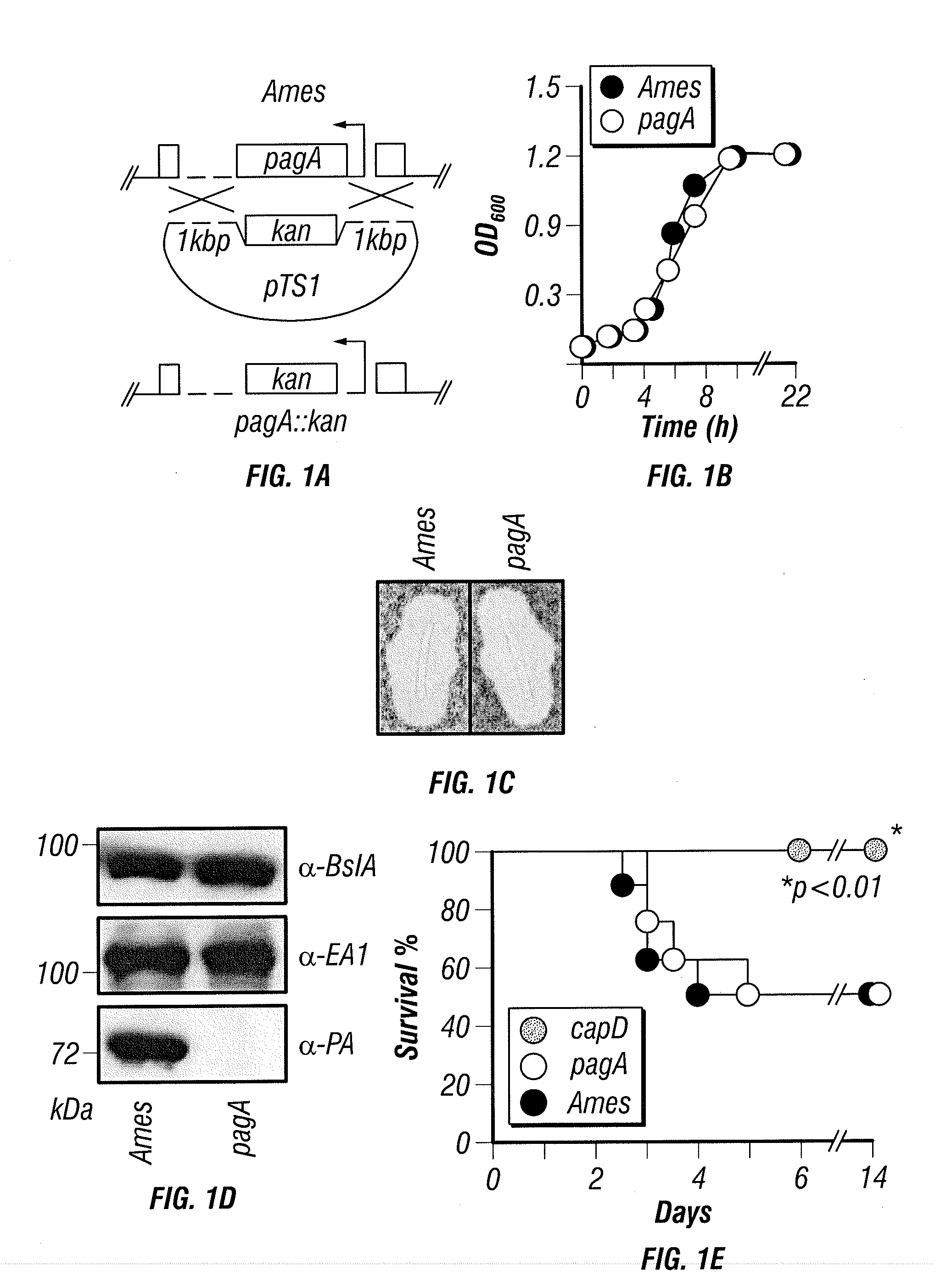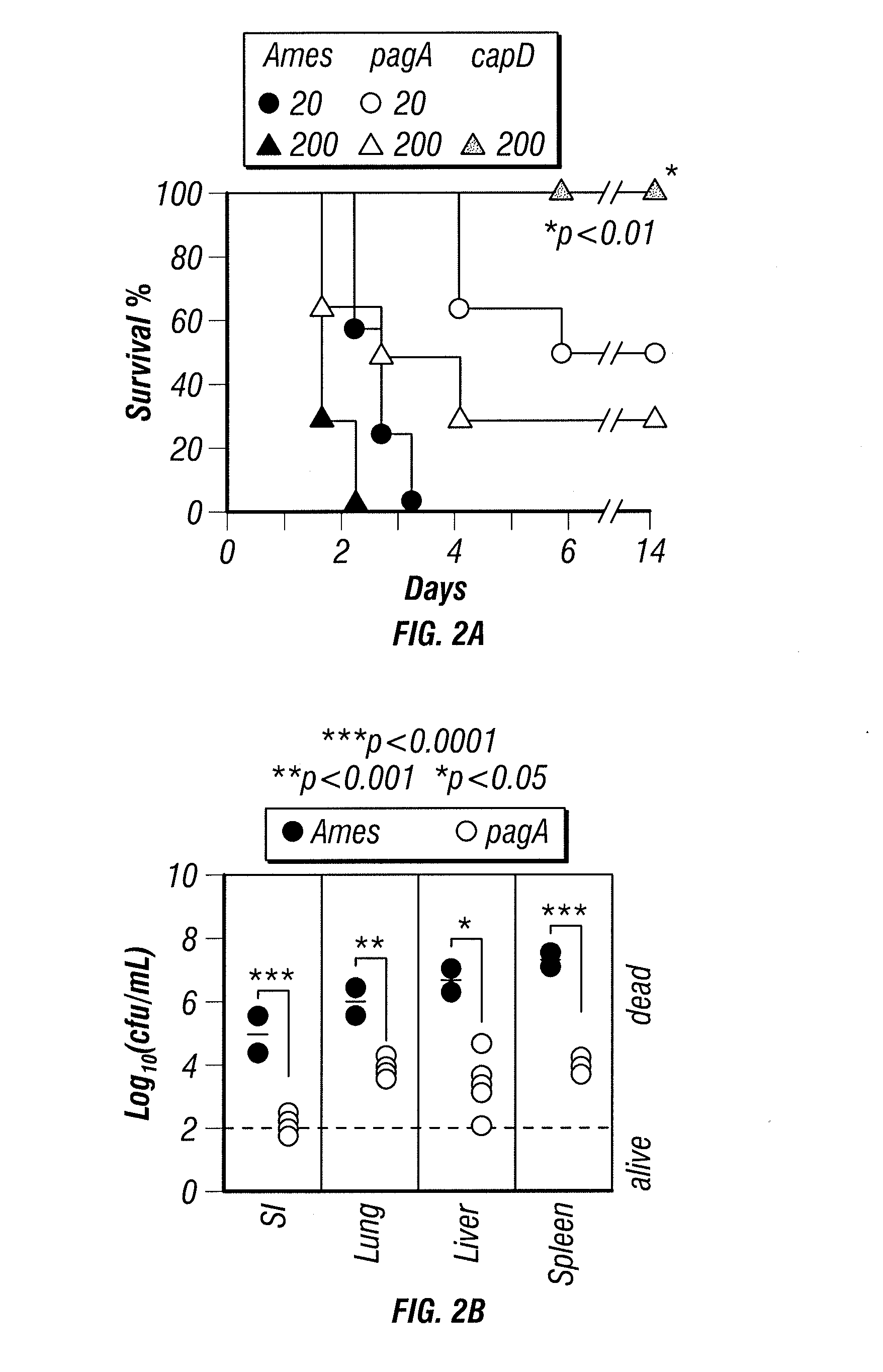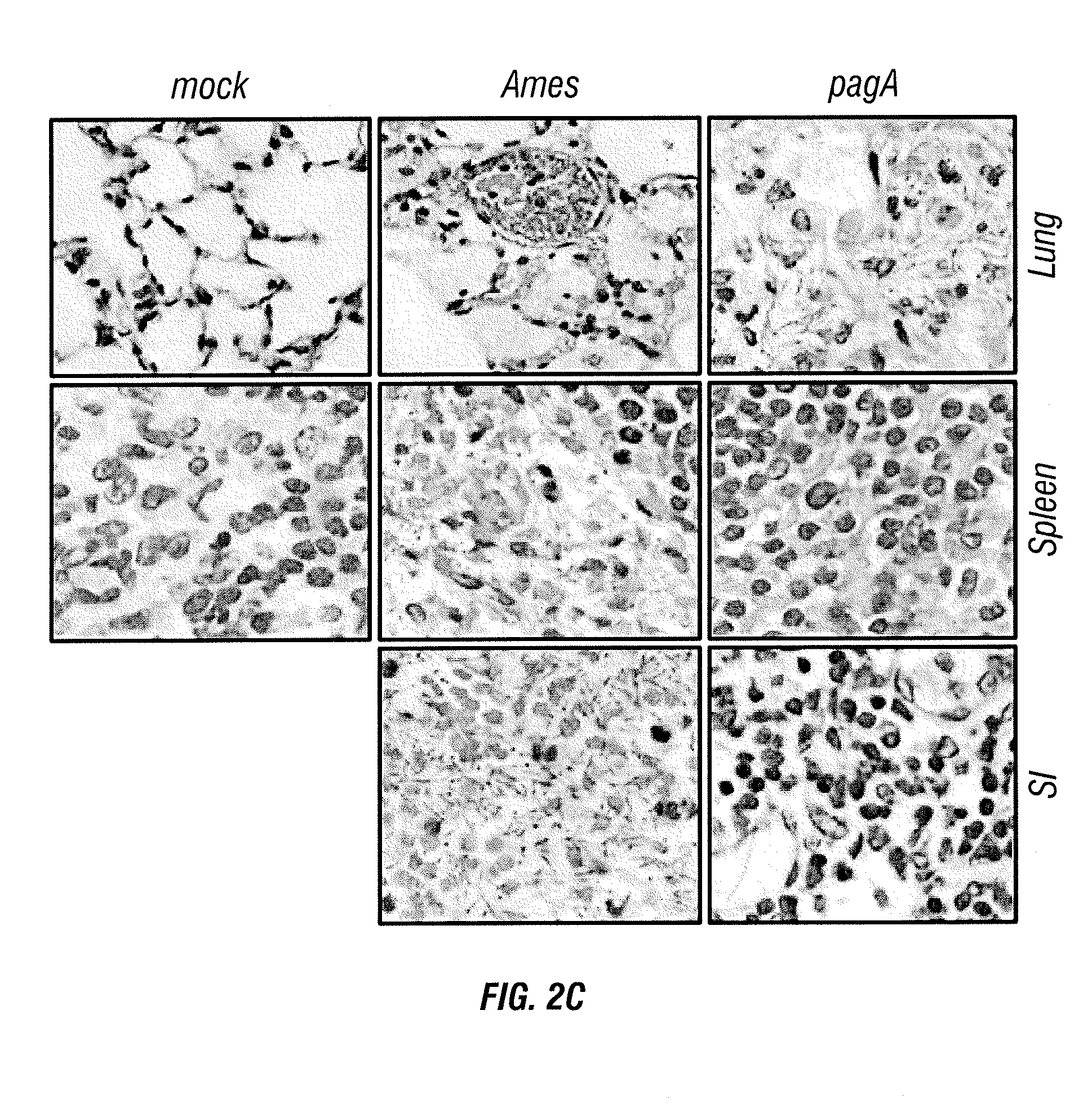Immunogenic protein conjugates and method for making and using the same
a technology of immunoglobulin and conjugates, applied in the field of immunoglobulin and conjugate production, can solve the problem that bacteria cannot be detected, and achieve the effect of preventing infection and preventing infection
- Summary
- Abstract
- Description
- Claims
- Application Information
AI Technical Summary
Benefits of technology
Problems solved by technology
Method used
Image
Examples
example 1
Virulence of pagA Mutant B. anthracis Injected into the Peritoneal Cavity of Mice
[0059]Using allelic replacement and phage transduction, the entire open reading frame of the pagA gene was deleted from the pXO1 virulence plasmid of B. anthracis Ames (FIG. 1A). The resulting pagA mutant strain formed spores and replicated in laboratory media at the same rate as wild-type bacilli (FIG. 1B). Growth in the presence of 5% CO2 gas led to formation of encapsulated vegetative forms for both wild-type and pagA mutant bacilli (FIG. 1C). Cultures of vegetative bacilli grown in the presence of bicarbonate were centrifuged, thereby separating extracellular media and bacterial sediment. Proteins in the supernatant were precipitated with TCA and probed by immunoblotting (FIG. 1D). As expected, B. anthracis Ames secreted PA into the culture medium whereas the pagA mutant strain did not (FIG. 1D). As a control, the pagA mutant expressed the pXO1-encoded S-layer-associated protein BslA at a level simi...
example 2
Materials and Methods
[0068]Bacillus anthracis Growth and Spore Preparations
[0069]B. anthracis cultures were grown overnight in Luria broth with or without 0.85% sodium bicarbonate at 37° C. and diluted in fresh medium at 37° C. Antibiotics were added to cultures for plasmid selection: 100 μg / ml ampicillin and 50 μg / ml kanamycin for Escherichia coli strains and 20 μg / ml kanamycin for B. anthracis strains. For spore preparation, vegetative cultures of B. anthracis Ames wild-type, pagA or capD mutants were sporulated in modified G medium [0.2% yeast extract, 0.0025% CaCl2 dihydrate, 0.05% KH2PO4, 0.00976% MgSO4 anhydrous, 0.005% MnCl2.4H2O, 0.00073% ZnSO4.7H2O, 0.00005% FeSO4.7H2O, 0.2% (NH4)2SO4] until >99% sporulation was observed by light microscopy. Endospores were heat-treated at 68° C. for 1 h to kill vegetative cell. Spores were washed with sterile ddH2O three times, suspended in sterile H2O and stored frozen at −80° C. Endospore preparations were plated on LB agar to determine ...
PUM
| Property | Measurement | Unit |
|---|---|---|
| Electrical resistance | aaaaa | aaaaa |
| Ratio | aaaaa | aaaaa |
| Immunogenicity | aaaaa | aaaaa |
Abstract
Description
Claims
Application Information
 Login to View More
Login to View More - R&D
- Intellectual Property
- Life Sciences
- Materials
- Tech Scout
- Unparalleled Data Quality
- Higher Quality Content
- 60% Fewer Hallucinations
Browse by: Latest US Patents, China's latest patents, Technical Efficacy Thesaurus, Application Domain, Technology Topic, Popular Technical Reports.
© 2025 PatSnap. All rights reserved.Legal|Privacy policy|Modern Slavery Act Transparency Statement|Sitemap|About US| Contact US: help@patsnap.com



